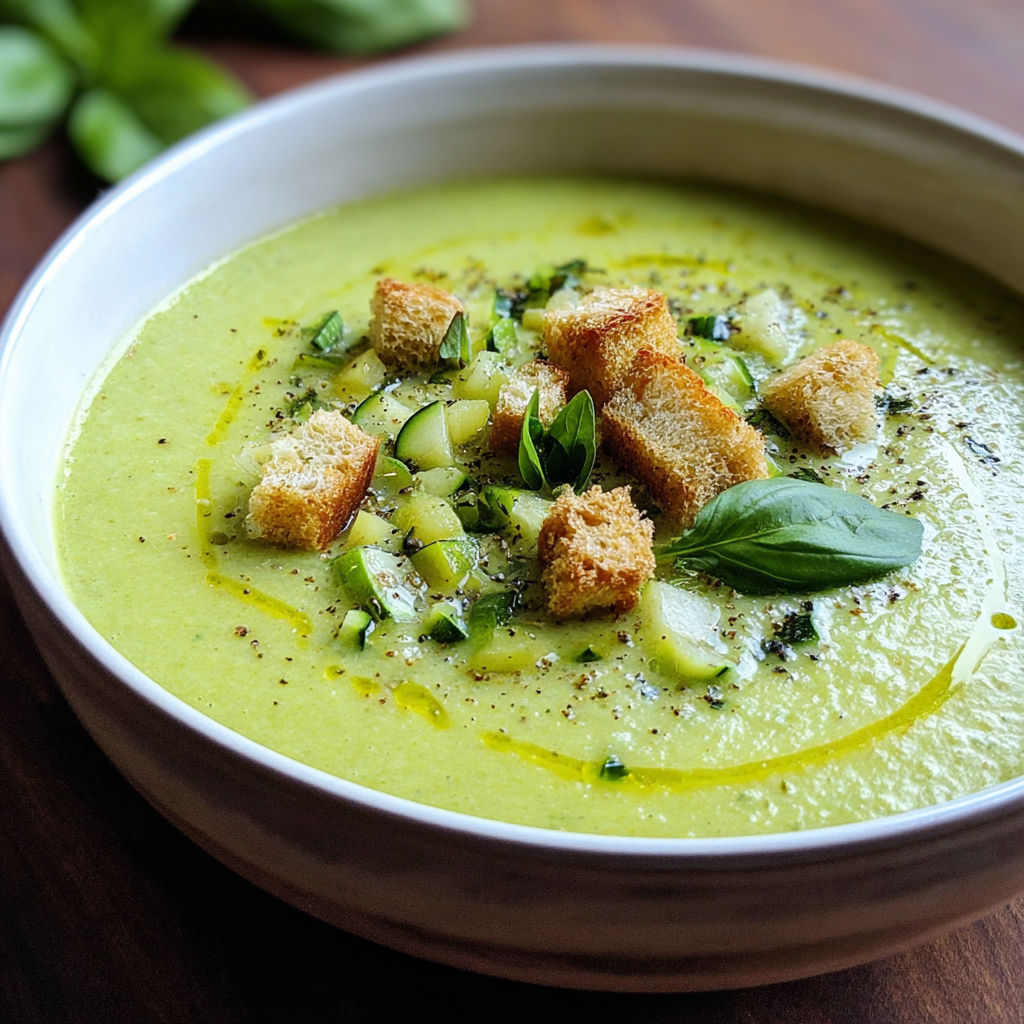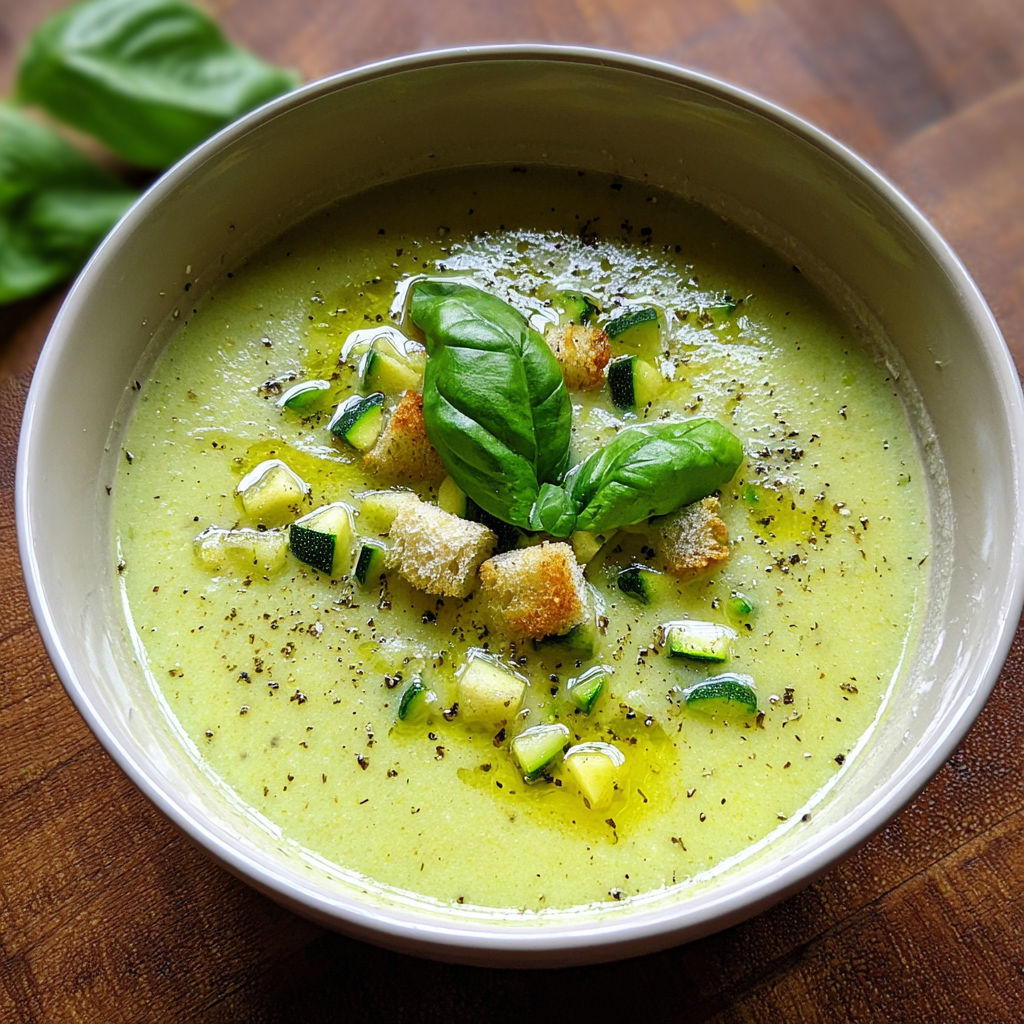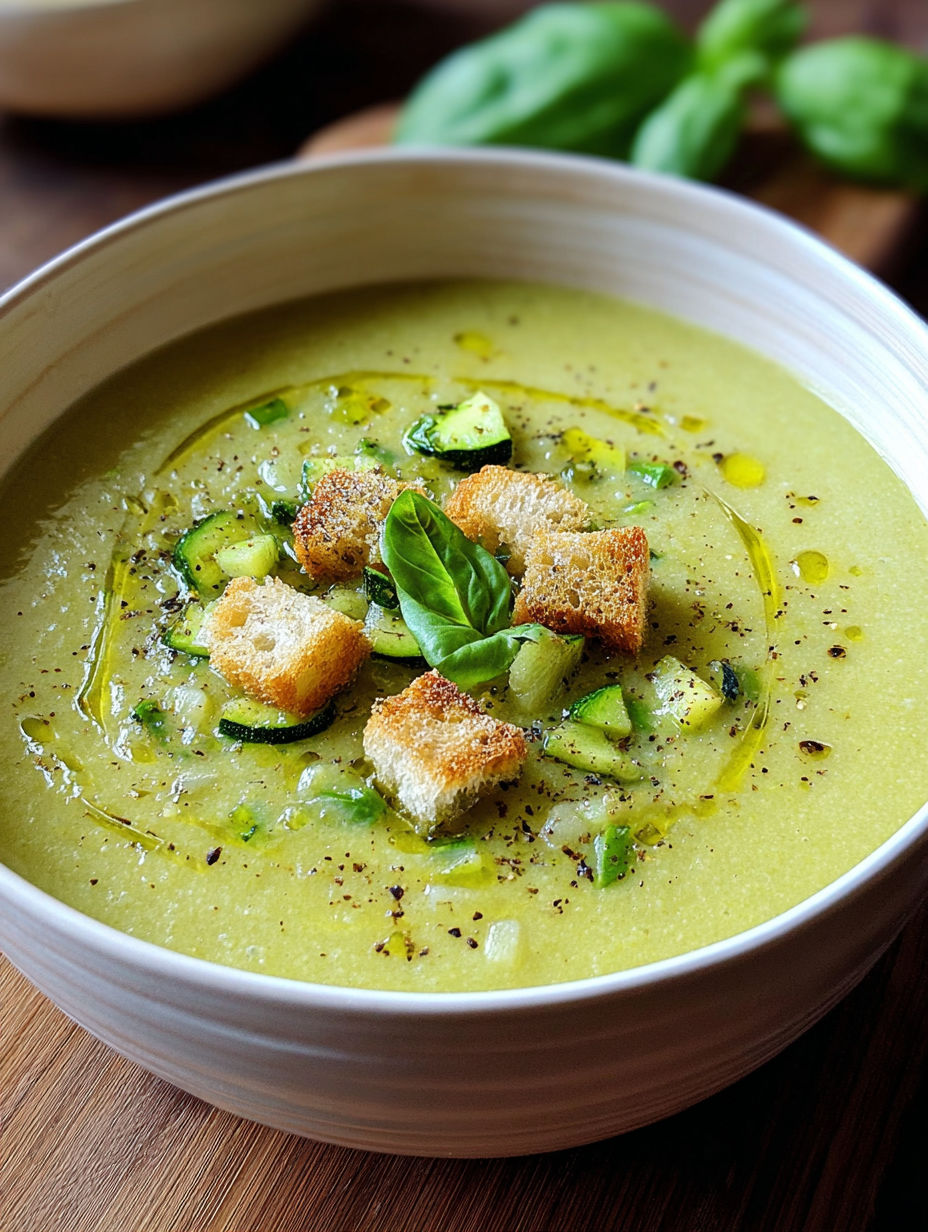 Pin
Pin
This creamy zucchini soup transforms the humble summer squash into a velvety comfort dish that's both light and satisfying. Perfect for using up garden bounty or as a quick weeknight meal, this soup balances the subtle sweetness of zucchini with aromatic herbs and rich coconut milk.
I first created this recipe during a particularly productive zucchini season when my garden was producing more than we could eat. Now it's become our favorite summer-to-fall transition meal that makes the most of late-season vegetables.
- Zucchini four medium ones form the base of this soup providing a delicate flavor and creamy texture when blended
- Onion and garlic these aromatics create the essential flavor foundation for any good soup
- Potato adds body and creaminess without needing heavy cream a secret ingredient for velvety texture
- Vegetable broth use homemade for best flavor but a good quality store bought works beautifully too
- Fresh basil leaves brightens the soup with its aromatic qualities choose leaves that are vibrant green without any dark spots
- Coconut milk provides richness and a subtle sweetness that complements the zucchini perfectly
- Olive oil use a good quality extra virgin olive oil for the best flavor profile
- Salt and pepper always essential for bringing all the flavors together
How To Make Zucchini Soup
- Sauté the aromatics
- Heat olive oil in a large heavy bottomed pot over medium heat until it shimmers. Add diced onion and cook for a full 5 minutes until they become translucent and slightly golden around the edges. This slow cooking develops sweetness and depth.
- Add garlic
- Stir in the minced garlic and cook for exactly 1 to 2 minutes until you can smell its fragrance blooming in the oil. Be careful not to brown it as garlic can quickly become bitter.
- Cook the vegetables
- Add chopped zucchini and diced potato to the pot. Allow them to cook for about 5 minutes while stirring occasionally. The zucchini will start to soften and release some moisture which helps build flavor through slight caramelization.
- Simmer the soup
- Pour in the vegetable broth making sure to scrape up any flavorful bits from the bottom of the pot. Bring the mixture to a gentle boil then reduce to a simmer. Let it cook uncovered for 15 to 20 minutes until you can easily pierce the potato pieces with a fork.
- Add fresh herbs
- Remove the pot from heat completely before adding the fresh basil leaves. This preserves their bright flavor and color that would otherwise diminish with prolonged cooking.
- Blend until smooth
- Use an immersion blender directly in the pot for easiest cleanup or carefully transfer batches to a countertop blender. Blend until completely smooth with no visible chunks for the most luxurious texture.
- Finish with coconut milk
- Return blended soup to the pot if using a countertop blender. Stir in the coconut milk and warm gently over low heat. Be careful not to boil after adding coconut milk as it can separate. Season generously with salt and freshly ground black pepper.
The humble potato is actually my secret weapon in this recipe. While many creamy soups rely on heavy cream or butter, the starch from just one medium potato creates that silky mouthfeel without any dairy at all. My grandmother taught me this trick years ago, and I've never looked back.
Make Ahead and Storage
This zucchini soup actually tastes even better the next day after the flavors have had time to meld. Store in an airtight container in the refrigerator for up to 4 days. When reheating, do so gently over medium-low heat, stirring occasionally to prevent scorching. If the soup thickens too much during storage, simply add a splash of vegetable broth or water to reach your desired consistency.
Seasonal Variations
Summer's bounty offers endless possibilities for this versatile soup. Try adding a handful of sweet corn kernels just before blending for texture and sweetness. In late summer, swap one zucchini for a yellow summer squash for a more vibrant color. During cooler months, add a teaspoon of curry powder or ground cumin when sautéing the onions for a warming spice profile that transforms this light soup into a cozy meal.

Perfect Pairings
Serve this soup as a starter before a main course or make it a complete meal with the right accompaniments. A crusty whole grain bread or garlic toast makes for excellent dipping. For a heartier meal, top each bowl with a sprinkle of toasted pine nuts or pumpkin seeds for protein and crunch. A simple side salad with a lemon vinaigrette creates a perfect light dinner combination that won't weigh you down.

Recipe FAQs
- → Can I make this zucchini soup ahead of time?
Yes, this soup stores exceptionally well. Make it up to 3 days ahead and refrigerate in an airtight container. The flavors actually develop and improve over time. Reheat gently on the stovetop, adding a splash of broth if needed to adjust consistency.
- → What can I substitute for coconut milk?
If you prefer alternatives to coconut milk, heavy cream, half-and-half, or plain unsweetened almond milk work well. Each will alter the flavor profile slightly—cream provides richness without coconut notes, while almond milk creates a lighter finish.
- → Is this zucchini soup freezer-friendly?
Absolutely! Freeze in airtight containers for up to 3 months. For best results, freeze before adding the coconut milk, then add it fresh when reheating. Allow to thaw overnight in the refrigerator before gently rewarming.
- → How can I make this soup more filling?
Transform this soup into a heartier meal by serving with crusty bread or adding protein. Try topping with crispy chickpeas, shredded chicken, or white beans. You can also stir in cooked quinoa or farro just before serving for added texture and nutrition.
- → What herbs can I use instead of basil?
While basil pairs beautifully with zucchini, other herbs work wonderfully too. Try mint for brightness, dill for a tangy note, or thyme for an earthier flavor. Cilantro creates a completely different profile that pairs especially well with the coconut milk.
- → How can I make this soup without an immersion blender?
A countertop blender works perfectly—just be careful with the hot liquid by blending in smaller batches and venting the lid slightly. For a rustic version, you can use a potato masher for a chunkier texture, or simply dice the vegetables smaller before cooking for a naturally thicker consistency.
